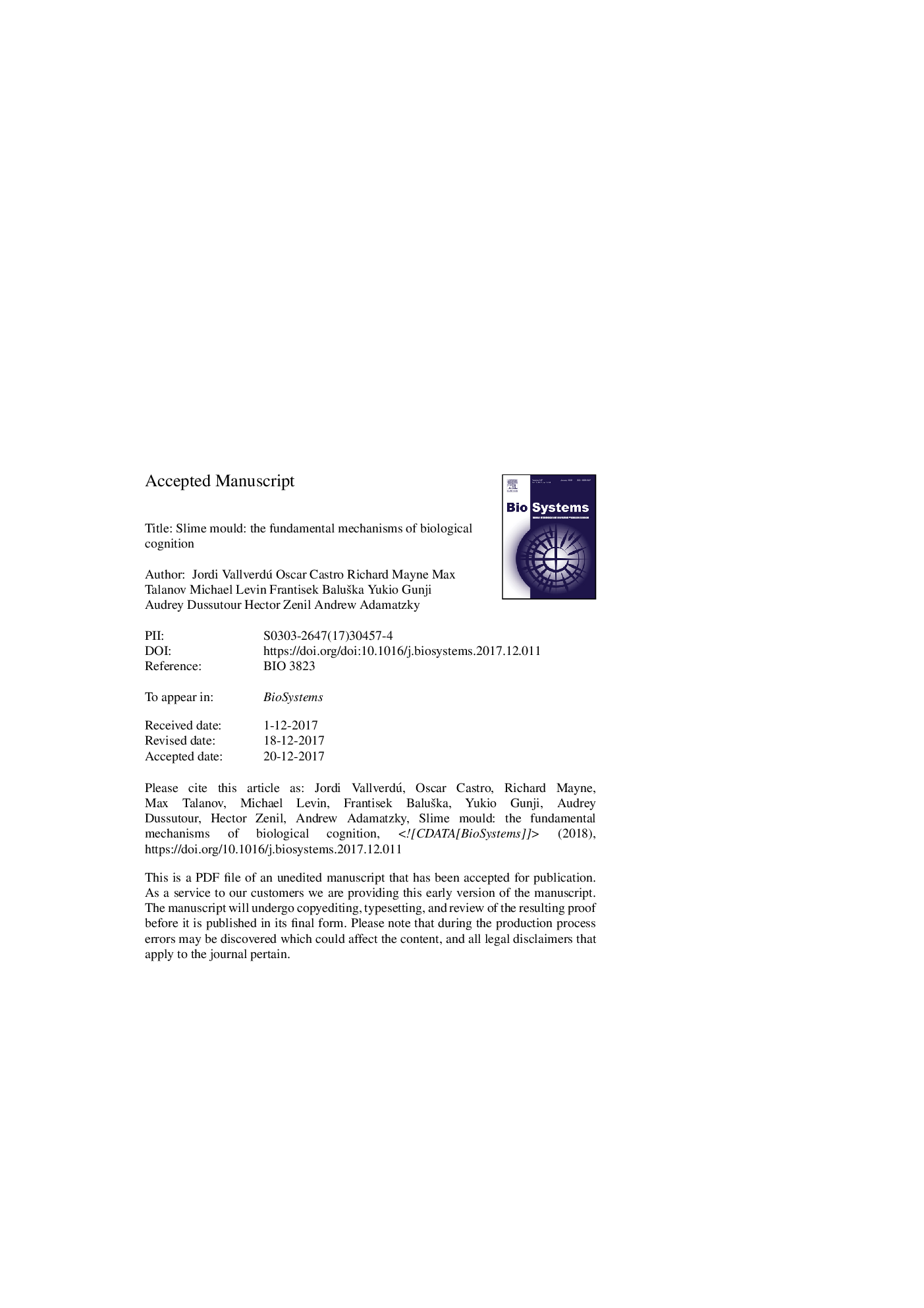| Article ID | Journal | Published Year | Pages | File Type |
|---|---|---|---|---|
| 8406538 | Biosystems | 2018 | 54 Pages |
Abstract
The slime mould Physarum polycephalum has been used in developing unconventional computing devices for in which the slime mould played a role of a sensing, actuating, and computing device. These devices treated the slime mould as an active living substrate, yet it is a self-consistent living creature which evolved over millions of years and occupied most parts of the world, but in any case, that living entity did not own true cognition, just automated biochemical mechanisms. To “rehabilitate” slime mould from the rank of a purely living electronics element to a “creature of thoughts” we are analyzing the cognitive potential of P. polycephalum. We base our theory of minimal cognition of the slime mould on a bottom-up approach, from the biological and biophysical nature of the slime mould and its regulatory systems using frameworks such as Lyon's biogenic cognition, Muller, di Primio-LengelerÅ modifiable pathways, Bateson's “patterns that connect” framework, Maturana's autopoietic network, or proto-consciousness and Morgan's Canon.
Keywords
Related Topics
Physical Sciences and Engineering
Mathematics
Modelling and Simulation
Authors
Jordi Vallverdú, Oscar Castro, Richard Mayne, Max Talanov, Michael Levin, Frantisek BaluÅ¡ka, Yukio Gunji, Audrey Dussutour, Hector Zenil, Andrew Adamatzky,
